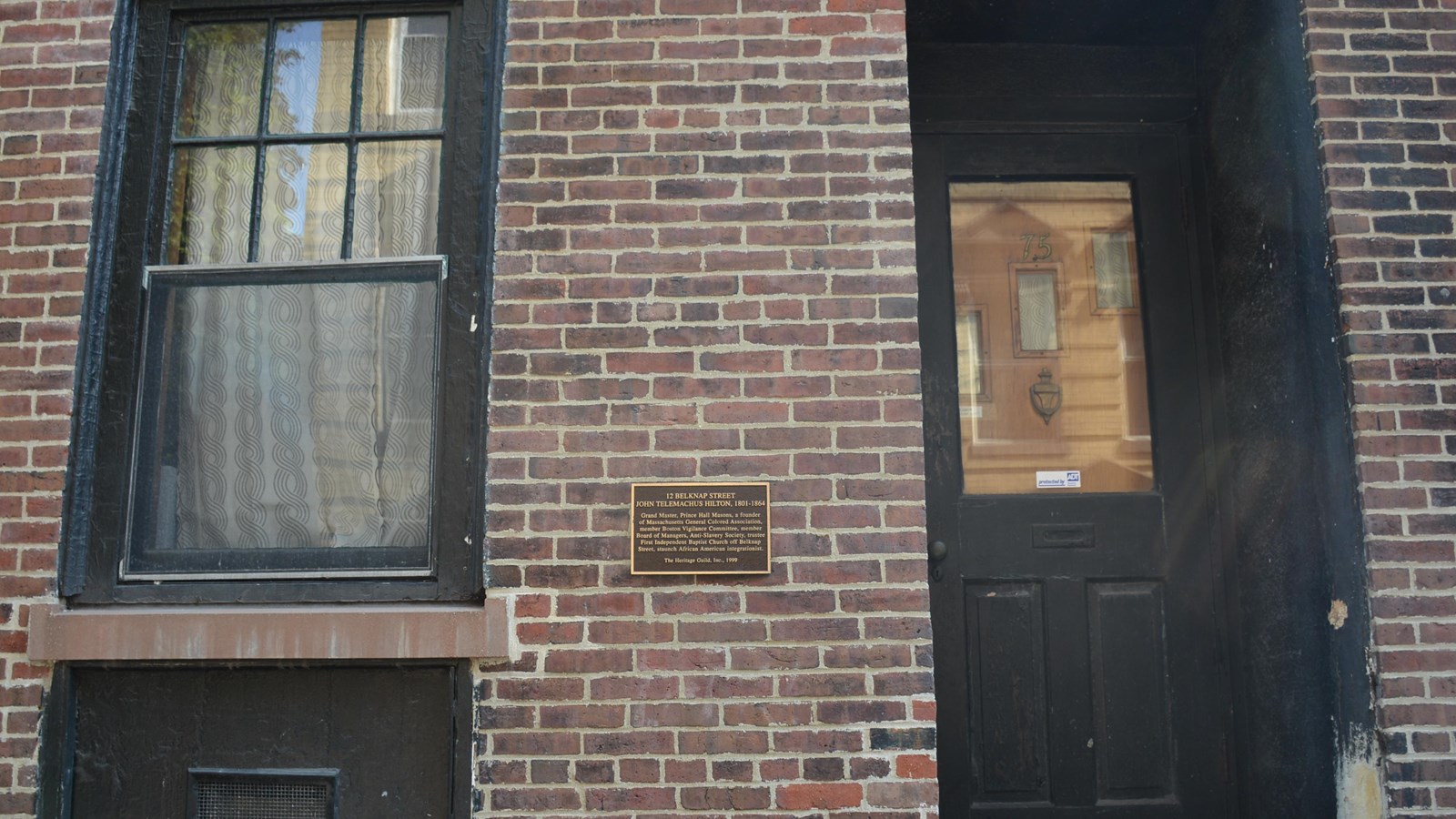Last updated: January 16, 2025
Place
John T. Hilton House

NPS Photo/Pollock
For over 50 years in the 1800s, this house on Joy Street, formerly 12 Belknap Street, served as the home of several Black Bostonians, including community activists and at least two known Underground Railroad operatives.1
John Telemachus Hilton, a barber, lived here briefly in 1831. Hilton has become the namesake of this home due to his political activity as a member of the Black Beacon Hill community. He spoke out against slavery, supported integration, helped found the Massachusetts General Colored Association, and served as the Grand Master of the Prince Hall Masons.2
In 1836, Anthony F. Clark, a hairdresser, became the owner of the property; however, he did not move into the building until 1839. During this two-year gap, John R. Taylor, known for assisting freedom seekers, used the building as a boarding house.3 During this time, freedom seeker Leonard Black stayed at Taylor’s 12 Belknap Street boarding house when he arrived in Boston. In his autobiography, Black recalled,
Finally, I met with a colored lady by the name of Sarah Taylor, the wife of John R. Taylor. I asked her if she knew any thing about my brothers. She said a George Black had passed through Boston, and lived in Portland. She said, “Come home with me, for I perceive you have been a slave.” I went and boarded with her for $3 a week... I was very ragged and dirty. Mrs. Taylor wrapped me up in Mr. Taylor’s cloak, and sent me to Portland.4
Anthony Clark lived here until around 1850, when he sold the property to his brother, Jonas W. Clark, owner of a Brattle Street clothing shop and worked with the Boston Vigilance Committee, an organization dedicated to helping fugitive slaves.5 Unlike his brother, Jonas did not live at 12 Belknap Street and instead rented out to tenants.
The Clark family owned 12 Belknap Street (73 Joy Street) into the 1870s, when they decided to sell it.
Today, this building stands as the “earliest extant dwelling associated with people of color on Joy Street.”6

This map highlights the house at 75 Joy Street when owned by Jonas Clark. (Credit: "Atlas of Boston," 1874, State Library of Massachusetts)
Footnotes
- Kathryn Grover and Janine V. Da Silva, "Historic Resource Study: Boston African American National Historic Site," Boston African American National Historic Site, (2002), 40.
- Grover and Da Silva,"Historic Resource Study," 41-42.
- Grover and Da Silva,"Historic Resource Study," 42.
- Grover and Da Silva,"Historic Resource Study," 39-40.
- Grover and Da Silva,"Historic Resource Study," 42.
- Grover and Da Silva,"Historic Resource Study," 40.
